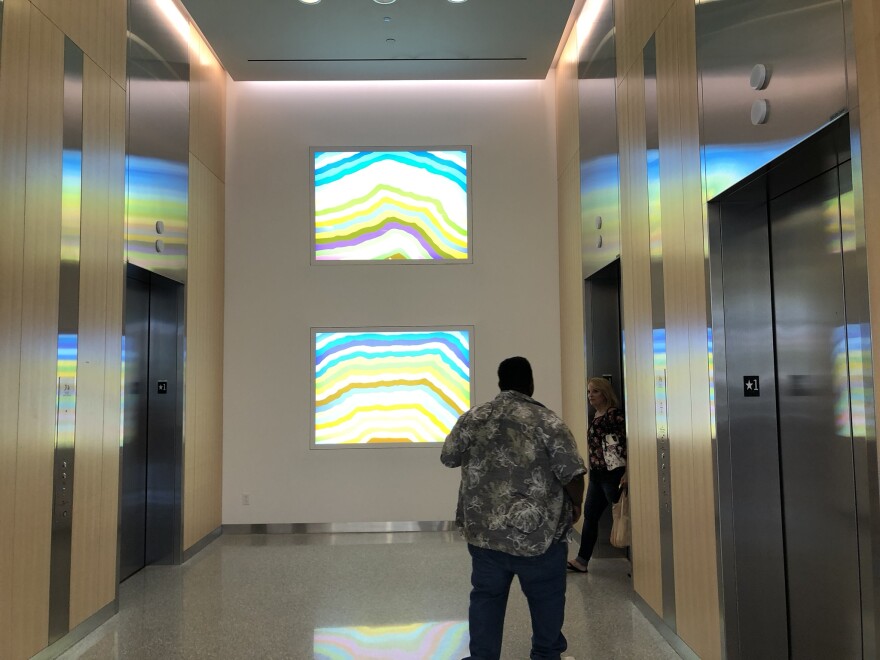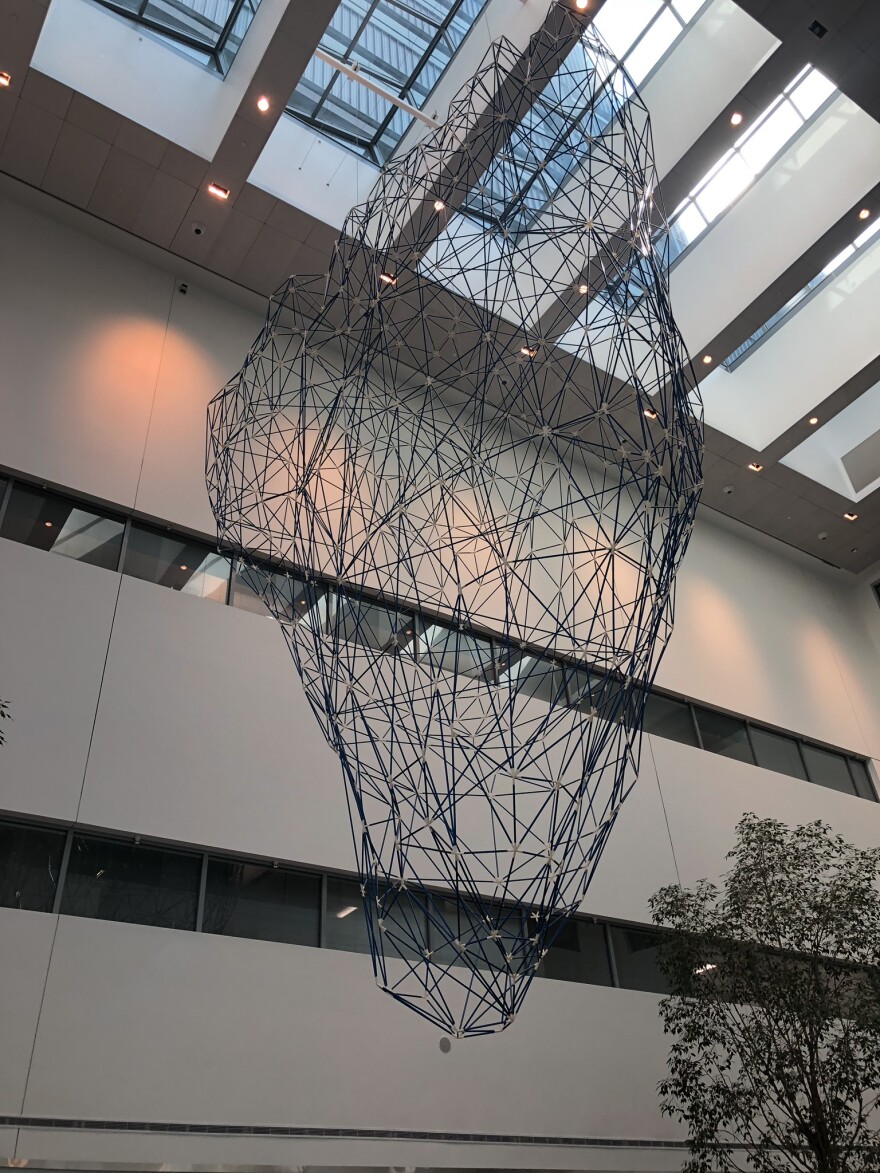Millions pass through the doors of the Cleveland Clinic each year. With dozens of buildings on its main campus, there are miles and miles of wall space full of artwork. On this week’s State of the Arts, join us for a tour.
As you enter the Cleveland Clinic’s front door, you're instantly surrounded by artwork of all shapes and sizes. This is where we meet Joanne Cohen, curator and director of the Clinic's Art Program. She's standing in front of a huge sculpture of a figure made up of letters fused together.
"So the artist is Juame Plensa. He did this site-specific commission called 'Cleveland Soul.' The letters that you see are arbitrary; they don't spell out anything necessarily. And you'll see that there's a figure. And the face is left deliberately blank. So that's really meant to embody that every man, every woman, we all go through the patient journey at some place in time."
Starting the Collection
Cohen said artwork is no stranger to Cleveland Clinic, but it wasn’t until 2005 that it decided to curate art experiences much like a museum and make its art program part of the patient experience.
"People are coming here, they might be stressed; they’re worried. They have all different considerations going on. They’re not necessarily signing up for an art experience, so what can we do to enhance that experience, make the art be part of it, and educate it and make it more of an amenity as people go through their journey," she said.
In all, the Cleveland Clinic has more than 6,500 pieces of art on display.
"We have a team of nine people that includes two art installers and they are responsible for installing the art in over 33-million square feet of facilities."
That includes campuses in Ohio, Florida, Las Vegas, Toronto and as far away as Abu Dhabi.

Artwork of All Kinds
Walking through hallways from building to building, Cohen points out more pieces than can be counted, by as many artists.
There’s works on paper, paintings, and even video projections on the walls and floor. But how do you keep all this artwork safe in such a non-traditional art setting?
"These are great challenges," Cohen said. "I think we’ve been really lucky that people are really respectful and mindful of the art. They’ve come to see that it’s so thoughtfully curated and placed."
So what might work in the pediatric area could be different from what’s placed in the cancer center.
Cohen thinks the artwork is a way to give people a mental break from the traditional hospital setting. "And to also create an opportunity for people to experience things they might not otherwise get to see. That they might find moments of beauty of levity. That the artwork might distract them or transport them elsewhere."

After walking what feels like a couple miles, you enter the Clinic’s main gallery, which isn’t actually a gallery at all. It’s a ten foot wide hallway that’s currently housing a large photo series. Cohen said it’s one of the Clinic’s main arteries.
"We have this giant wide open corridor. It’s really high traffic, but you have the luxury of so much space, in stepping back. So you can place dramatic, largescale, six foot photographs here."
As you step out of the main gallery to make, you can make your way through some of the Clinic’s newer buildings like its cancer center.
The Main Gallery
Before this building was constructed, Cohen and her team put on hard hats and worked with architects to incorporate how to best place artwork into the design.

"Because they come to us and we’re not an afterthought. So they’re thinking, they’re mindful of that fact that ‘oh, lighting is going to be important to these artworks. What can we best do to enhance it?’ So it’s a collaborative effort. And if you have that conversation early on in the process, it’s going to result in much better outcomes."
The building is full of vibrant art installations that make you feel like you’re in a modern art gallery, not a medical campus.

"Essentially what we set out to do was to change the paradigm of what it’s like to be in a healthcare setting. We feel like art is so strong in helping with the healing process, and such an integral part of people’s lives, why should it not be in this setting?"
And Cohen hopes that someday the Cleveland Clinic will become a destination not just for healthcare, but for art lovers, too.








